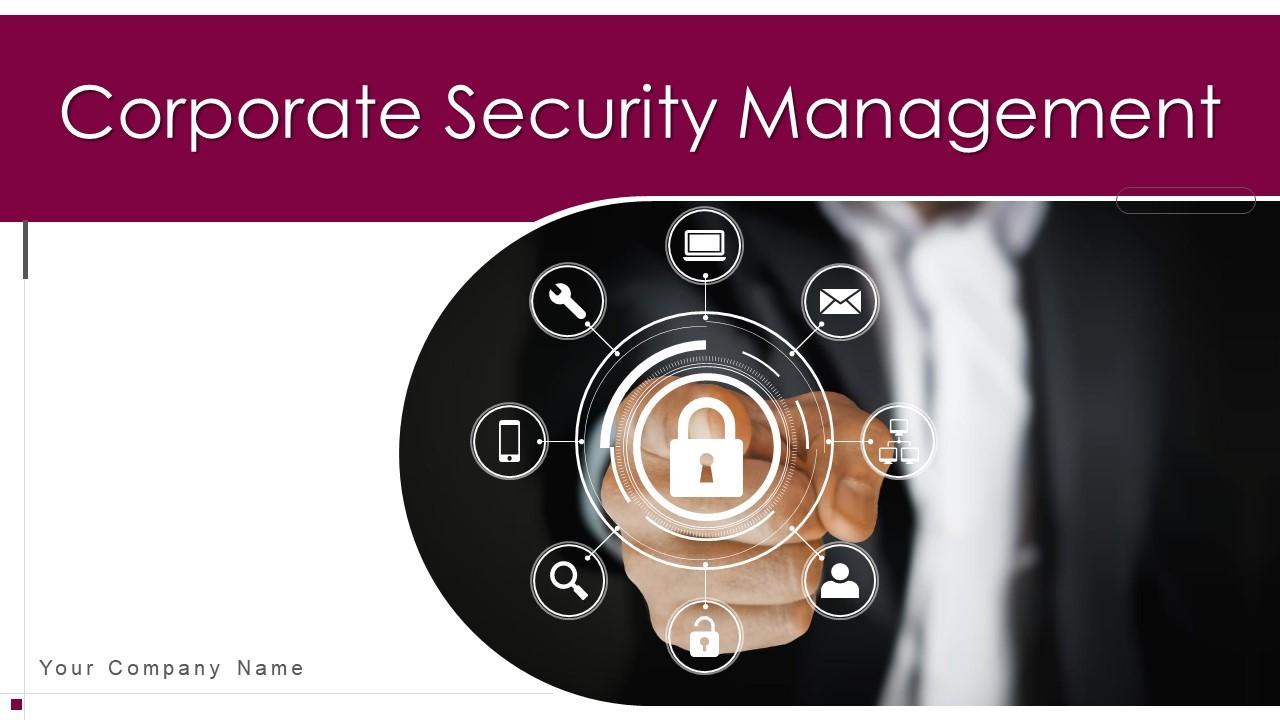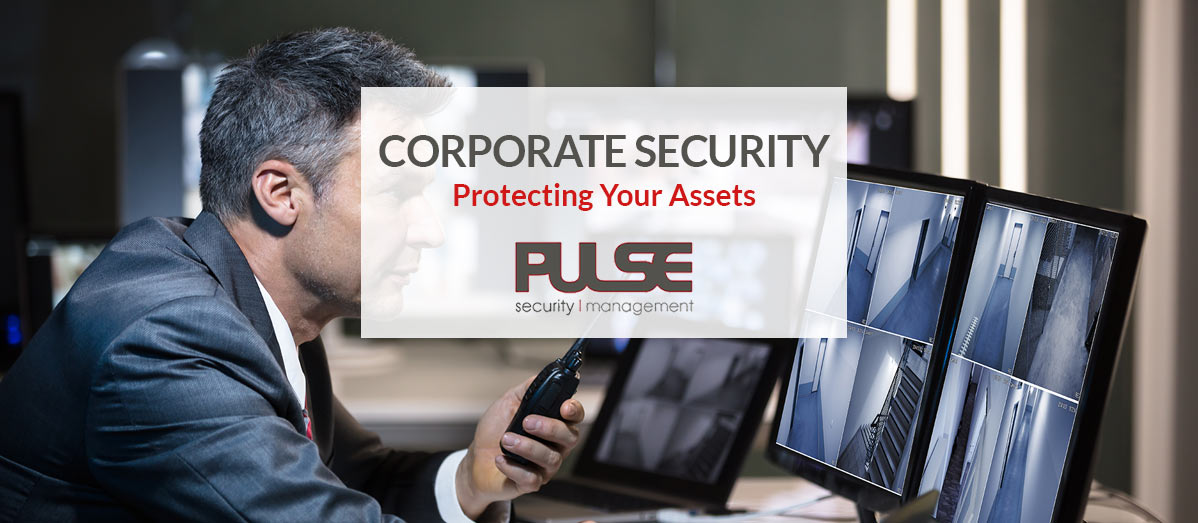Encouraging Your Organization with Ironclad Corporate Security Measures
Encouraging Your Organization with Ironclad Corporate Security Measures
Blog Article
From Cybersecurity to Physical Actions: Strengthening Corporate Security in a Changing Globe
By incorporating the toughness of both cybersecurity and physical security, companies can develop a detailed defense technique that attends to the diverse variety of risks they deal with. In this discussion, we will certainly explore the transforming hazard landscape, the demand to integrate cybersecurity and physical safety, the application of multi-factor authentication steps, the importance of worker recognition and training, and the adjustment of safety actions for remote labor forces. By checking out these crucial areas, we will certainly obtain beneficial understandings into just how companies can enhance their corporate security in an ever-changing world.
Comprehending the Altering Threat Landscape
The evolving nature of the modern-day world necessitates a comprehensive understanding of the transforming hazard landscape for reliable corporate security. In today's digital and interconnected age, threats to company safety and security have actually ended up being much more intricate and advanced. As technology advances and businesses come to be increasingly dependent on digital facilities, the potential for cyberattacks, information breaches, and other safety and security violations has dramatically raised. It is crucial for organizations to remain informed and adapt their protection measures to attend to these developing risks.
One key element of recognizing the transforming risk landscape is recognizing the different kinds of dangers that organizations face. Additionally, physical hazards such as burglary, criminal damage, and business reconnaissance stay common issues for services.
Surveillance and analyzing the hazard landscape is essential in order to identify possible threats and susceptabilities. This includes remaining upgraded on the most recent cybersecurity trends, assessing threat knowledge reports, and carrying out regular threat analyses. By recognizing the altering threat landscape, companies can proactively carry out proper safety steps to mitigate threats and secure their possessions, credibility, and stakeholders.
Integrating Cybersecurity and Physical Security
Incorporating cybersecurity and physical protection is vital for extensive company protection in today's electronic and interconnected landscape. As companies progressively rely upon innovation and interconnected systems, the borders between physical and cyber threats are becoming obscured. To effectively secure against these risks, an all natural approach that incorporates both cybersecurity and physical security measures is essential.
Cybersecurity concentrates on safeguarding electronic possessions, such as systems, networks, and information, from unapproved gain access to, disruption, and theft. Physical security, on the other hand, encompasses measures to protect physical properties, individuals, and facilities from hazards and vulnerabilities. By integrating these 2 domain names, companies can deal with susceptabilities and threats from both digital and physical angles, consequently boosting their general safety stance.
The integration of these two techniques enables a more detailed understanding of safety threats and allows a unified response to incidents. For instance, physical access controls can be improved by integrating them with cybersecurity procedures, such as two-factor authentication or biometric identification. Likewise, cybersecurity procedures can be matched by physical security steps, such as surveillance cams, alarms, and safe and secure access factors.

Implementing Multi-Factor Verification Procedures
As companies progressively focus on detailed safety and security procedures, one effective method is the execution of multi-factor authentication procedures. Multi-factor verification (MFA) is a safety approach that needs users to offer numerous kinds of recognition to access a system or application. This method includes an added layer of protection by combining something the customer recognizes, such as a password, with something they have, like a safety or a finger print token.
By implementing MFA, organizations can dramatically boost their protection posture - corporate security. blog here Conventional password-based authentication has its restrictions, as passwords can be conveniently jeopardized or neglected. MFA reduces these threats by including an extra authentication variable, making it harder for unauthorized useful reference individuals to get to sensitive info
There are numerous kinds of multi-factor authentication methods readily available, including biometric authentication, SMS-based confirmation codes, and equipment symbols. Organizations require to analyze their details needs and pick the most proper MFA solution for their needs.
However, the implementation of MFA need to be thoroughly prepared and implemented. It is critical to strike a balance in between safety and functionality to avoid user aggravation and resistance. Organizations ought to also take into consideration prospective compatibility issues and offer sufficient training and assistance to make certain a smooth shift.
Enhancing Worker Understanding and Training
To enhance corporate protection, organizations need to prioritize boosting employee recognition and training. In today's quickly developing threat landscape, staff members play a critical duty in protecting an organization's sensitive info and assets. Regrettably, numerous security breaches take place as a result of human error or absence of recognition. Companies require to invest in comprehensive training programs to educate their staff members about prospective threats and the best methods for alleviating them.
Reliable employee awareness and training programs must cover a wide variety of topics, consisting of data protection, phishing attacks, social engineering, password hygiene, and physical safety actions. These programs should be tailored to the specific requirements and duties of various staff member duties within the company. Regular training sessions, simulations, and workshops can assist workers develop the needed abilities and understanding to determine and respond to safety and security risks efficiently.
Moreover, companies must encourage a society of safety recognition and offer ongoing updates and suggestions to keep staff members educated concerning the latest hazards and mitigation techniques. This can be done via internal interaction channels, such as newsletters, intranet portals, and e-mail campaigns. By cultivating a security-conscious workforce, organizations can substantially reduce the probability of safety cases and safeguard their valuable possessions from unauthorized gain access to or compromise.

Adapting Protection Measures for Remote Workforce
Adapting business protection measures to suit a remote labor force is important in making sure the defense of delicate information and assets (corporate security). With the boosting pattern of remote job, companies have to carry out ideal security steps to reduce the dangers related to this new way of working
One important element of adapting safety and security steps for remote work is establishing secure communication networks. Encrypted messaging systems and online private networks (VPNs) can help safeguard sensitive information and prevent unapproved access. In addition, companies must implement making use of solid passwords and multi-factor verification to improve the safety and security of remote access.
Another essential consideration is the execution of safe and secure remote gain access to options. This entails supplying employees with secure accessibility to corporate resources and information through moved here digital desktop computer infrastructure (VDI), remote desktop methods (RDP), or cloud-based options. These innovations guarantee that sensitive information continues to be secured while enabling staff members to do their functions effectively.

Last but not least, comprehensive protection awareness training is crucial for remote workers. Educating sessions need to cover ideal techniques for securely accessing and dealing with sensitive info, determining and reporting phishing attempts, and preserving the overall cybersecurity health.
Conclusion
To conclude, as the risk landscape remains to progress, it is critical for companies to strengthen their security gauges both in the cyber and physical domains. Incorporating cybersecurity and physical protection, applying multi-factor verification actions, and boosting employee awareness and training are important steps towards achieving durable corporate security. Additionally, adjusting safety actions to accommodate remote labor forces is important in today's changing world. By implementing these measures, organizations can alleviate threats and shield their useful possessions from prospective risks.
In this conversation, we will check out the transforming danger landscape, the need to incorporate cybersecurity and physical safety and security, the execution of multi-factor verification procedures, the significance of staff member understanding and training, and the adjustment of safety and security actions for remote labor forces. Cybersecurity procedures can be matched by physical security procedures, such as security cams, alarm systems, and protected access points.
As companies increasingly prioritize detailed safety and security actions, one effective technique is the execution of multi-factor authentication procedures.In conclusion, as the danger landscape proceeds to evolve, it is vital for companies to strengthen their safety gauges both in the cyber and physical domain names. Integrating cybersecurity and physical safety and security, executing multi-factor verification actions, and enhancing employee understanding and training are necessary actions towards achieving robust business safety.
Report this page